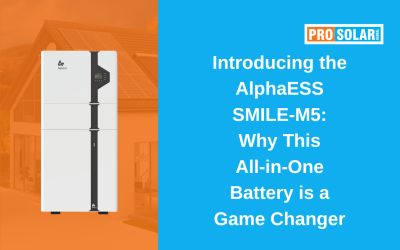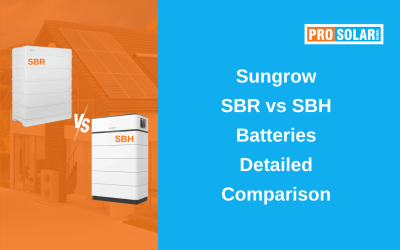Installing solar panels on a flat roof may seem simple, but without proper tilt, your system could underperform or breach safety codes. In 2025, tilt frames are often necessary to ensure:
- Maximum energy generation
- Adequate water drainage
- Wind resistance
- System compliance
At Prosolar Global, we install solar systems on all types of flat roofs—residential, commercial, and multi-storey. Here’s everything you need to know about when tilt frames are required and how they affect cost, safety and performance.
1. What Are Tilt Frames?
Tilt frames are angled mounting structures designed to raise solar panels off a flat or near-flat surface to a steeper angle—usually between 10° and 30°.
They help position panels towards the sun’s path, improving exposure, airflow and rain runoff. Tilt frames are:
- Made of aluminium or galvanised steel
- Fixed at an angle facing true north (or adjusted slightly for orientation)
- Either ballasted (weight-held) or roof-penetrating (anchored with bolts)
2. When Are Tilt Frames Required?
Tilt frames are generally required when:
- Your roof pitch is less than 5°
- You want maximum solar output year-round
- You’re installing in southern Australian states (VIC, SA, TAS)
- You’re working with limited roof space and need efficiency
- Warranty requires minimum tilt for self-cleaning performance
Flat-mounted panels without tilt can:
- Lose 10–15% energy output annually
- Accumulate dirt, debris and water, reducing efficiency
- Void manufacturer warranties (due to lack of self-cleaning angle)
3. Cost Implications of Tilt Frames
Adding tilt frames can increase your solar install cost by 5% to 15%, depending on: ● Frame height and angle
- Ballast vs bolt-down method
- Wind zone rating and site access
- Commercial vs residential property
However, this cost is often recovered through higher energy yield over the system’s lifespan.
Tip: A well-designed tilt frame can pay for itself in just 2–4 years through improved solar output.
4. Tilt Frames vs Flush-Mounted Panels
| Feature | Tilt Frame Mounting | Flush Mounting (0–5°) |
| Energy Output | Higher (optimised angle) | Lower (suboptimal angle) |
| Cleaning & Drainage | Improved water runoff | More dirt build-up |
| Warranty Compliance | Meets min tilt requirements | May void warranty |
| Structural Load | Higher (wind uplift risk) | Lower wind profile |
| Installation Cost | Slightly higher upfront | Lower upfront |
5. Do You Always Need Tilt Frames for Flat Roofs? Not necessarily.
You may skip tilt frames if:
- You’re using bifacial panels designed for horizontal mounting
- Your energy needs are modest and shading isn’t an issue
- The roof is slightly pitched (5–10°) and panels face north
- You’re constrained by building height limits or wind exposure
Tip: In some cases, high-density commercial arrays use horizontal panels to avoid wind loading and maximise space.
6. Structural and Council Considerations
Tilt frames can trigger additional compliance on certain sites:
- Wind uplift ratings (especially in coastal or cyclone zones)
- Height limitations in council zoning laws
- Extra ballast or engineering on commercial roofs
In these cases, your installer may need to provide:
- Structural engineer certification
- Council submission or exemption
- Fire and egress compliance (for shared rooftops)
7. Real-World Use Cases
Case 1: A commercial site in Melbourne with a flat concrete roof chose tilt frames at 30°, increasing annual output by 18% compared to flat-mounted panels. The ROI improved by 3 years despite higher upfront cost.
Case 2: A homeowner in Sydney skipped tilt frames on their flat roof. After 12 months, they faced performance drop and warranty refusal due to water pooling and dirt build-up. The system had to be re-mounted at an extra cost.
Conclusion
For most flat roof solar installations, tilt frames are not optional—they’re essential for long-term performance, safety and warranty protection.
While they add modest upfront cost, the returns in energy output, reduced maintenance and system longevity make them well worth it.
Installing solar on a flat roof? Wondering if you need tilt frames?
Talk to our expert by calling them on 1300 181 191 to get a site-specific solar design and tilt frame assessment from Prosolar Global.




